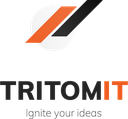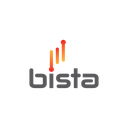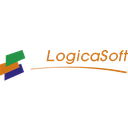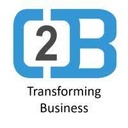-
Opening Keynote - Unveiling Odoo 17
Fabien PinckaersВыполнено
-
Keynote - Vision & Strategy
Fabien PinckaersВыполнено
-
Uplift Your Odoo E-commerce with Theme Prime
Parth GajjarВыполнено
-
Mollie's in store payments for Odoo PoS. A demo of our brand new terminal solution.
Hugo PrinseВыполнено
-
Seamless Salesforce to Odoo Migration: A Five-Step Roadmap
William McMahonВыполнено
-
Debugging with a scientific mindset
Fayolle AlexandreВыполнено
-
Securing user inputs through gui-configurable warning rules
Michael KröppelienВыполнено
-
Manage your baby store and birth list with Odoo
Dieu SébastienВыполнено
-
VanGO | Plennix's Van App that handles all your B2B and B2C outbound operations!
Tony FarhatВыполнено
-
Sales Order Approvals
Stephan KellerВыполнено

Hamid is the founder and CEO of bitigloo GmbH, with over five years experience as a senior techno-functional Odoo consultant and project manager.
His enthusiasm in challenging himself to find innovative solutions to complex problems made him dig more into Odoo’s applications and expand his area of expertise. Having a keen eye on IT and programming languages together with his academic background of business management helped him further grow professionally and made him confident to start his own business as a certified Odoo partner to put his creative ideas and solutions into practice and help companies optimize their processes.
One of the important topics in Odoo is the inventory routes and their related rules. In many projects, there is a need to have some routes other than the standard ones, but unfortunately, the topic or the process is sometimes so complex that the configuration will be very hard and time-consuming. Therefore, understanding the topic is essential in every project which involves inventory and/or manufacturing.
We will briefly discuss a few real cases, where we need to create a combination of routes and rules.
--> Scenario: each business unit had its own warehouse; each warehouse with four steps receipt and three steps deliveries. Without any sales order or any purchase order between the companies, we had to move products with a truck from warehouse A to warehouse B. Besides, all the four steps of delivery in warehouse A as well as all the three steps of the receipt in warehouse B must happen. (❗a diagram for a better understanding.)
--> Scenario: A kit (set of a laptop with keyboard and a mouse and a monitor) had to be delivered to a customer, but as a part of the inventory process, a software had to be installed on the laptop before packing. (❗a diagram for a better understanding.)
--> Scenario: In this scenario, our client had a dropship delivery from a vendor to the customer, but as a return process, the product had to come first to the client’s warehouse, then checked and then be sent back to the manufacturer (not the vendor) and then get a replacement from the vendor. (❗a diagram for a better understanding.)
In the next part, we will provide some tips to consider during the configuration of routes and rules:
-> Always try to use odoo standard routes!
-> Avoid editing the standard routes of Odoo, because they can get back to the original configurations, e.g. in case of a re-configuration through the warehouse settings.
-> Always first draw the routes & rules like Odoo’s routes diagram to get a better overview of your route.
-> In each step of the route, ask yourself:
--> “Is there any need at a location?”
---> if yes, “Where is the source of the need?” E.g. if there is a need at location B and we can procure the need from location A, it will be a pull rule from location A to location B.
---> if no, “Is the step always the same move e.g. from location A to location B?” Then it will be a push strategy from location A to location B.
-> Try to have separate operations for each rule.
-> Always think about the return route, too. Sometimes the return process is not the reverse of the delivery route.
-> Make sure you are setting the right Supply Method on the rules.
-> In case of multi-company setup:
--> Always be careful to use the right location and operations.
--> HINT: A rule MUST not (but can) be assigned to a company, but it’s highly recommended to assign each route to the related company
Finally, Q&A.



































![GLOBAL CREATIVE CONCEPTS TECH CO LTD [ iWesabe ]](https://odoocdn.com/web/image/event.sponsor/2232/image_128/Global%20Creative%20Concepts%20%5B%20iWesabe%20Technologies%20%5D?unique=cf3e01f)












































































